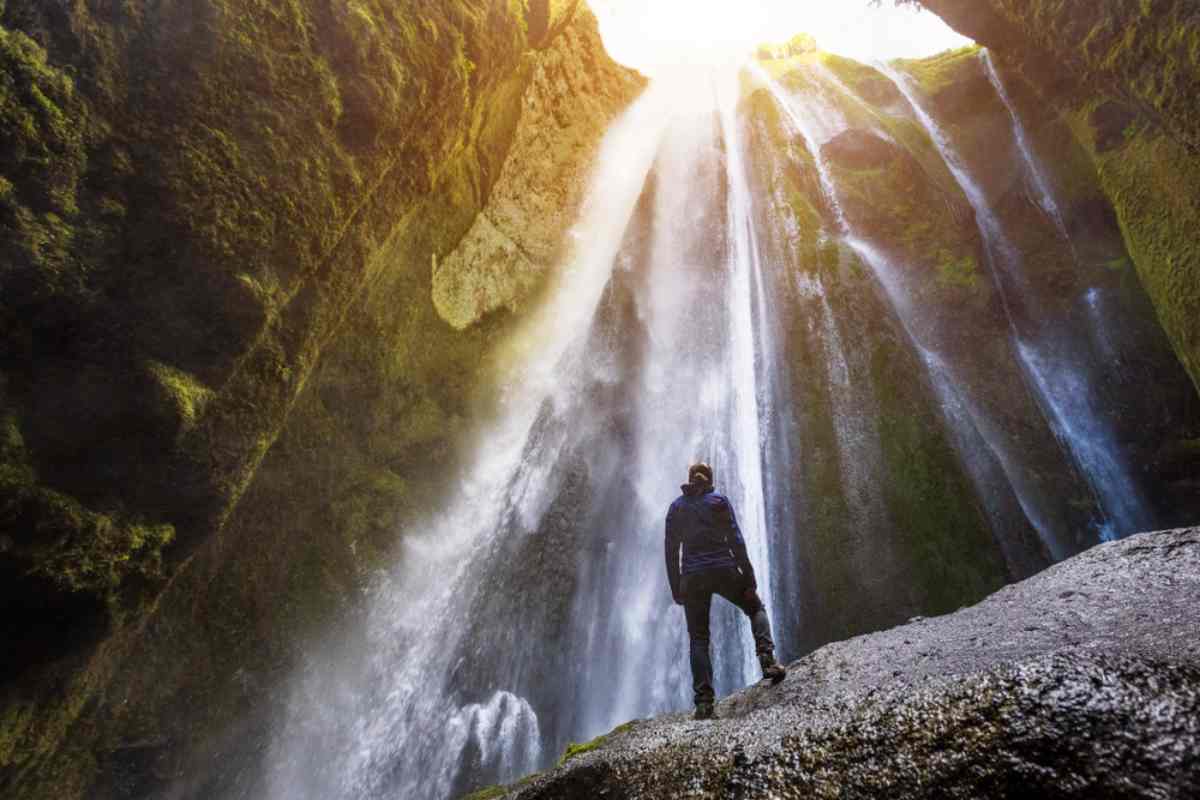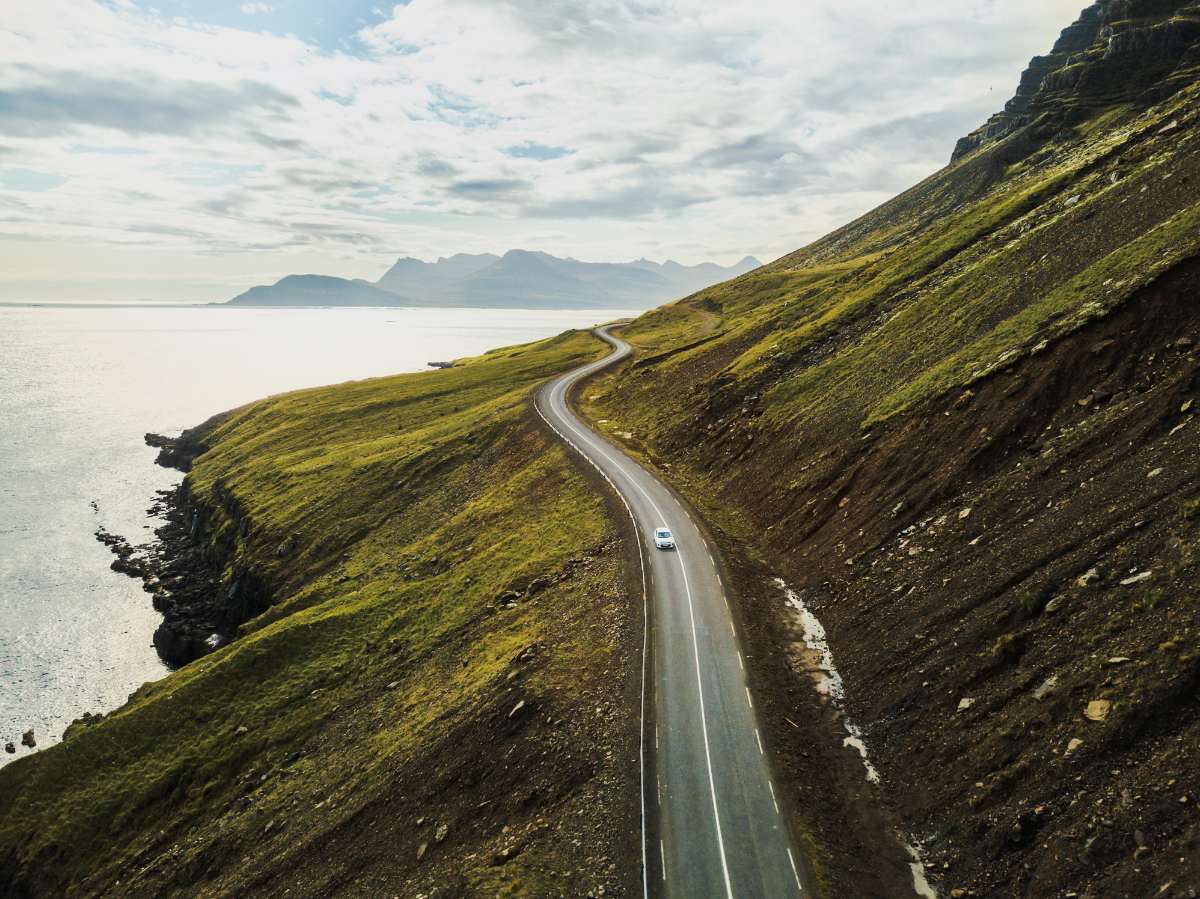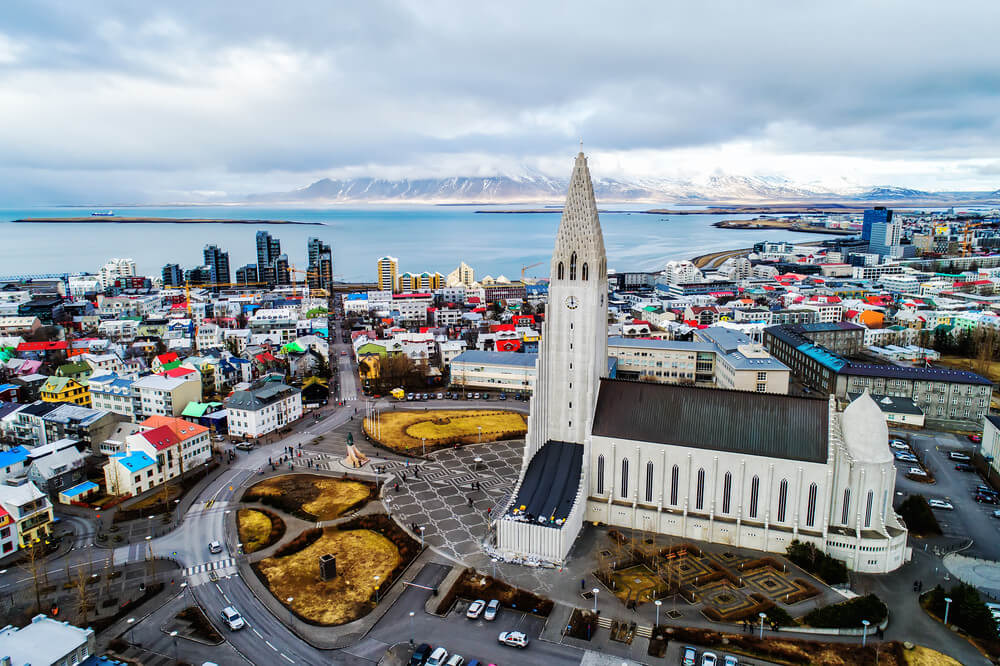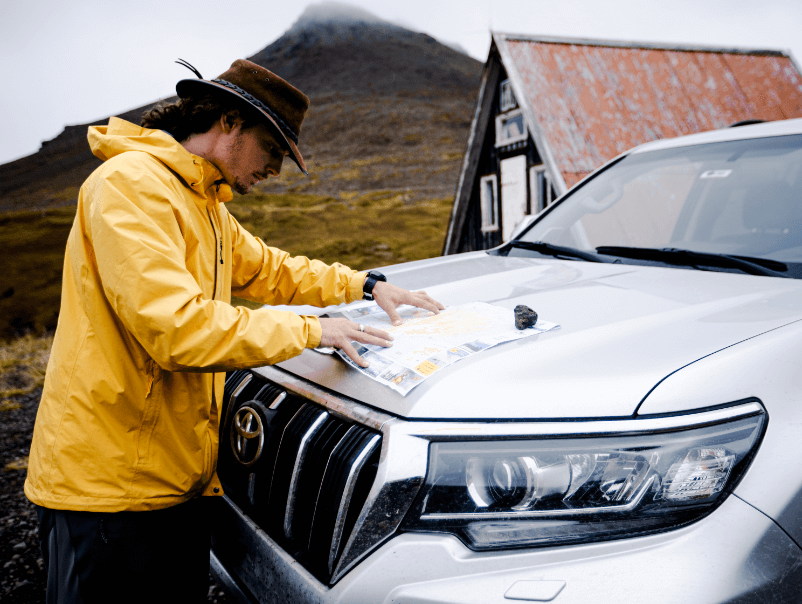Most travelers coming to Iceland don’t have money trees growing in their backyards (unfortunately). So, how do you get the most bang for your buck on a set holiday budget? Well, you get some inside info (*nudge, nudge, wink, wink) and pick the cheapest time to visit Iceland.
However, some experiences in Iceland will only remain available during those harsher-on-the-pocket periods. Here, you’ll need to decide what price tag you’re comfortable with for such once-in-a-lifetime experiences. To help you decide on when to visit and whether the cheapest time to go to Iceland will work for you, we’ve compiled this detailed description of the various tourism seasons in Iceland, as well as how expensive Iceland is in general.
When is the High Season in Iceland?
Summer (from June to the end of August) is considered peak season here in Iceland. Needless to say, visiting during this time can have quite a punch on a tight holiday budget. However, certain undeniable perks to the season may be worth the higher prices. Ultimately, the choice is yours. Here’s an easy-to-reference table to help you make your decision:
|
Pros |
Cons |
|
Nice and warm temperatures, ranging between 7 degrees Celsius (44 degrees Fahrenheit) and 13 degrees Celsius (55 degrees Fahrenheit). |
Everything on the island is more expensive. |
|
No harsh weather conditions, such as blizzards. |
The island is at its busiest, with plenty of traffic (on the roads as well as attractions). |
|
Plenty of daylight hours each day (averaging between 20 and 22 hours). |
The daylight hours tend to mess with some people’s circadian rhythms, so unless you come prepared with a plan, you may struggle with your sleep patterns. |
|
It’s an excellent time for outdoor activities, such as hiking and canoeing. |
|
|
It’s a great time for a road trip since all roads are pretty much guaranteed to be open (no harsh weather to cause sudden road closures, and all roads affected by annual road closures will be open). |
|
|
You can experience one of our most famous natural phenomena, the Midnight Sun if you visit between the 20th and 22nd of June. |
|
|
If you’re an animal lover, you’re in for a treat! The famous Iceland Puffins will be on the island throughout the entire summer season, and it’ll also be our official whale season, during which plenty of migratory whale species call Iceland their temporary home. |
When is the Off-Season?
Our off-season (as you may have already guessed) is our winter season, from December to March. Needless to say, it’s not rocket science as to why this is the cheapest time to travel to Iceland.
However, what many don’t know is that, except for the season's few obvious drawbacks, this time of year can also be incredibly magical here in Iceland. Check the table below to see if you agree:
|
Pros |
Cons |
|
Everything on the island is super affordable, and you’ll find plenty of special rates and discounts, whether for accommodation, attractions, etc. |
Below-freezing temperatures, ranging between -2 degrees Celsius (28 degrees Fahrenheit) and 3 degrees Celsius (37 degrees Fahrenheit). |
|
There’s no better time to spot another of our famous natural phenomena: the Northern Lights. The cold, darkness, and dry air make for the perfect conditions. |
Harsh weather conditions, such as blizzards. |
|
This is also the best time to explore our magical ice caves since most are kept closed throughout the warmer months of the year. |
Very few daylight hours to work with (just 4 hours a day mid-winter). |
|
While many outdoor activities are out the window, winter is the only time you can experience some of our other outdoor activities, such as skiing, snowboarding, and dog sledding across the snow. |
Most outdoor activities, such as hiking and canoeing, are no-gos. |
|
Our hot springs remain open throughout the year, and many locals swear by the exhilarating feeling and the numerous health benefits that the warm waters offer, particularly when contrasted with the crisp, cold air. |
A road trip can be challenging during this time. Not only are there plenty of sudden road closures, but you won’t be able to explore certain parts of the island, such as the Westfjords and the Highlands, due to the rougher road conditions and the annual closure of the F-roads. |
|
The island truly turns into a winter wonderland (the kind you usually only get to see on postcards and the movies). Just imagine the untouched blanket of snow covering the ground, glistening icicles all around, and natural wonders such as waterfalls practically frozen in time as frozen tentacles hang from cliff edges – absolutely breathtaking! |
When is the Shoulder Season?
As the name suggests, our shoulder seasons are the periods between the summer and winter seasons. In other words, April to May and September to November. These periods are also good candidates if you’re interested in the cheapest time to visit Iceland. See if it’s the right fit for you by checking the table below:
|
Pros |
Cons |
|
Temperatures might not be summer warm, but they are still not at winter extremes. You’re looking at the following: April = between 0 and 7 degrees Celsius (32 and 45 degrees Fahrenheit) May = between 4 and 10 degrees Celsius (39 and 50 degrees Fahrenheit) September = between 5 and 10 degrees Celsius (41 and 50 degrees Fahrenheit) October = between 2 and 7 degrees Celsius (36 and 45 degrees Fahrenheit) November = between 1 and 8 degrees Celsius (33 and 46 degrees Fahrenheit) |
It’s a bit of a Goldilocks situation – it’s either not quite the summer or the winter weather you’re hoping for. |
|
No harsh weather conditions, such as blizzards, although snowfall can already start occurring in the north by the end of October. |
Since these months are considered off-season, you may experience some changes in operating hours or even closures of sites and attractions (especially as you head toward winter). This will require some additional planning for your trip. |
|
There are still plenty of daylight hours each day to organize a jam-packed trip itinerary (averaging between 13 and 21 hours during April/May and between 12 and 6 by the end of November). |
If you’re visiting in May, the daylight hours can already become a problem as some struggle with their circadian rhythms and sleep patterns. |
|
Since shoulder months technically fall under our off-season flag, you’ll dodge not only the peak season prices but also the peak season crowds. This means less traffic on the roads and at attractions, and you also won’t have to worry about not finding transport or accommodation. |
|
|
Depending on the month, you can enjoy the outdoor activities of either summer or winter. For example, April and May, as well as September, can be wonderful for hiking, canoeing, and other outdoor activities, while October and November can already bring skiing opportunities and ice cave exploration. |
|
|
If you plan a road trip before mid-September, when most annual road closures begin, you’ll still be able to explore the island to your heart’s content, but at much more affordable rates. |
|
|
If you visit from mid-October to November, you still have a chance at spotting the Northern Lights – especially if you’re traveling in the northern parts of Iceland. |
|
|
If you’re an animal lover, you’ll also be able to spot some of our famous wildlife: the Puffins will already start arriving by the end of April, and our migratory whales tend to stick around till September. |
How Expensive is it to Visit Iceland?
You may have already heard that Iceland isn’t considered the most budget-friendly destination. There are several reasons for this, including the fact that Iceland is an island and the costs of transporting goods there can be extremely high. However, Icelanders get paid in relation to the standard cost of living here, so it’s only the visitors who end up really feeling the pinch in their pockets.
As you’ve already seen when we discussed the cheapest times to visit Iceland, there are ways to mitigate and manage costs, provided you do proper planning and come prepared. Below is a good example of what you can expect in terms of expenses based on the type of experience you want to have:
|
Expense Category |
Budget Option (per person) |
Mid-Range Option (per person) |
|
Flights |
$328–$450 |
$450–$700 |
|
Accommodation |
$350–$500 |
$700–$1,200 |
|
Food |
$150–$250 |
$300–$500 |
|
Transportation |
$150–$300 (shared car) |
$400–$600 (private car) |
|
Activities/Tours |
$100–$200 |
$300–$600 |
|
Total |
$1,078–$1,700 |
$2,150–$3,600 |
Traveling to Iceland on a budget
Just because Iceland is considered an expensive destination doesn’t mean you can’t enjoy a budget-friendly trip. Here’s what to know:
Top 5 Free/Cheap Activities in Each Season
You’ll find plenty to do and see here on the island without breaking the bank. Include the following in your trip itinerary:
Summer (June to August)
- Go whale watching and Puffin spotting (you don’t need to go on a paid boat tour).
- Party with the locals as we celebrate the Midnight Sun.
- Go hiking (there are numerous trails all across the island).
- Don’t listen to TLC and DO go chasing waterfalls - most of our impressive waterfalls can be viewed free of charge!
- Take a stroll on one of our black sand beaches.
- Get yourself the Reykjavik Card and explore every inch of the capital city with plenty of freebies or discounted rates.
- Take a dip in one of our natural hot springs.
Winter (December to March)
- Go on a Northern Lights hunt.
- Take a dip in one of our natural hot springs (hear us out; many locals swear by the exhilarating experience of the warm waters vs. the cold air outside).
- STILL go chasing waterfalls! Winter brings an entirely different and magical waterfall experience with frozen tentacles dangling meters over cliff edges.
- Visit Diamond Beach - as you can imagine, this beach filled with ice becomes even more spectacular when the warmer weather isn’t melting away the experience.
- When the weather turns on you, it’s time to take the adventure inside! Check out our incredible museums, some of which you can visit completely free of charge, such as Hafnarfjordur Museum and Volcano Museum.

Shoulder Seasons
The shoulder season months (April, May, September, October, and November) are a great way to take advantage of cheaper prices on the island while enjoying the best of either the summer or winter season sights and activities. For example, in September, the weather is still nice for outdoor activities and wildlife watching, and you’ll already be able to spot the Northern Lights in November.
Best Budget Travel Tips for Iceland
If you’re planning a budget-friendly trip, the following tips and tricks can help you go far:
- Travel during our off-season periods when prices all across the island are at their lowest.
- Take advantage of our discount cards, such as the Camping Card and the Reykjavik Card.
- Rent a campervan so you can have your transport and accommodation neatly packaged in just one cost-effective expense and go camping in affordable comfort.
- Limit dining out, and try sticking to cooking for yourself as much as you can.
- If you’re someone who enjoys a drink or two, ensure you stock up on alcoholic beverages from the duty-free; purchases on the island will drain a holiday budget very quickly.
- Also, purchase your groceries from our budget-friendly stores like Bonus and Kronan.
- Research your gas stations. Our gas stations don’t charge the same for gas and diesel, so with the right planning (or insider tips), you can save quite a few bucks.
- Also, chat to your rental agent about possible gas station discounts (they often have arrangements with local gas stations).
- Take advantage of all the free things to do and see around the island.
- Please don’t ever buy water here. Iceland has some of the purest water you’ll find on earth, and it’s just a tap away. So, get a refillable water bottle and quench your thirst wherever, whenever you want.
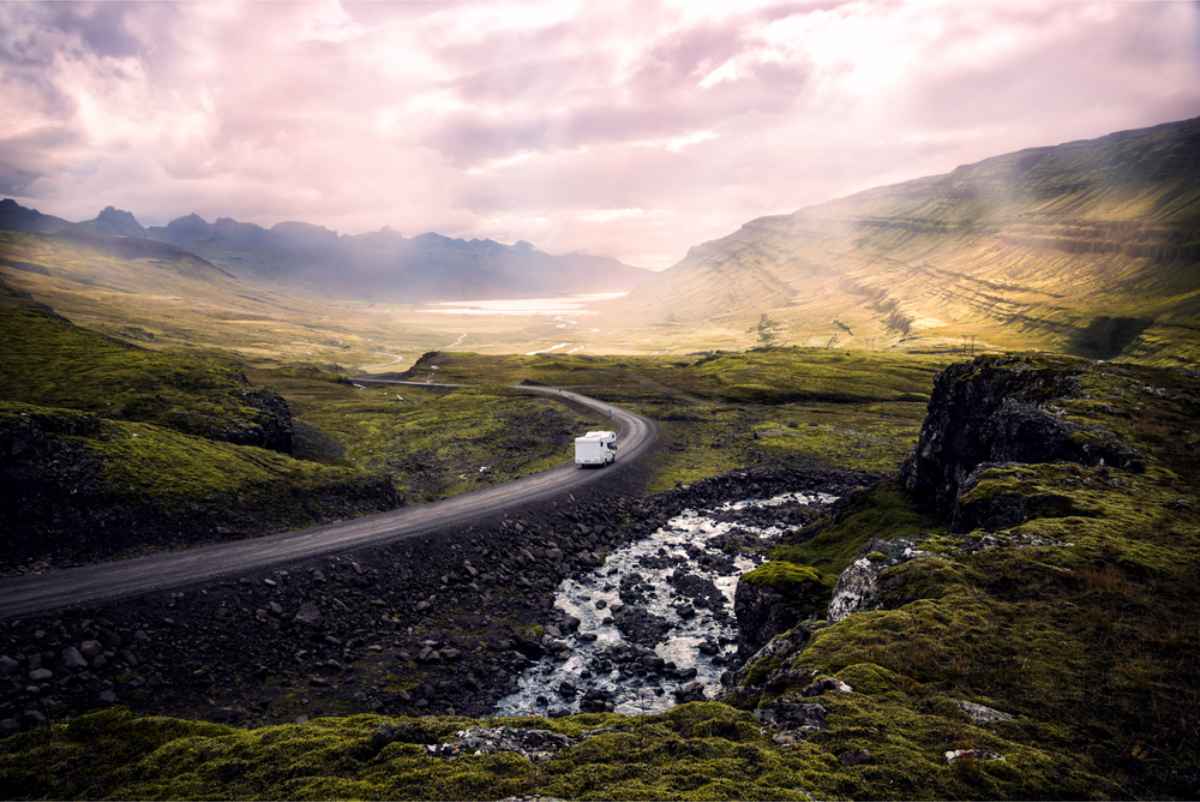
Budget Iceland Itinerary Examples
Not sure where to begin planning your budget Iceland itinerary? No problem; use ours! Or at least use them as inspiration to customize your own version:
3-Day Budget Iceland Itinerary
This itinerary can be done either by staying in a hostel in Reykjavik and making day trips, although we highly recommend renting a campervan and taking advantage of our super affordable campsites (including Reykjavik Eco Campsite, conveniently located in the city itself).
Day 1
Upon landing at Keflavik Airport, head out to the capital city of Reykjavik where you will spend the day exploring all the beautiful sights. A few highlights include:
- Hallgrimskirkja
- Reykjavik Harbor
- One of our famous hot dogs at Baejarins Bezru Pylsur
Day 2
Time to take on the Golden Circle route. This popular road trip route is a little loop road that gives you the golden opportunity to see some of the most famous attractions here on the island. A few highlights include:
- Thingvellir National Park
- Gullfoss Waterfall
- Geysir Geothermal Area
Day 3
Today will be spent exploring the waterfalls and the “frosty” side of the south coast before heading back to the capital city. A few highlights include:
- Hiking to view the incredible Solheimajokull Glacier
- Majestic waterfalls such as Seljalandsfoss and Skogafoss.

5-Day Budget Iceland Itinerary
This budget itinerary follows the same first three days before going on a few additional adventures here on the island. For this trip, you also won’t be able to do day trips from the capital city, so we highly recommend renting a campervan and go camping in style along the way.
Day 4
Today will be spent exploring the Snaefellsnes Peninsula. Many say, once you’ve seen Snaefellsnes, you may not even need to see the rest of the island as it gives you a taster of almost everything the Land of Fire and Ice has to offer (hence why it’s referred to as “mini Iceland”). A few highlights include:
- Kirkjufell Mountain
- Djupalonssandur Beach
- Raudfeldsgja Gorge
Day 5
Today you’ll be driving back to Reykjavik. Take your time and stop at any sites along the way that might interest you. This could also be the one day of a bit of “splurging” after Scrooging your way across the island so far by stopping at the famous Blue Lagoon for a relaxing soak in its healing waters.
7-Day Budget Iceland Itinerary
Similar to the 5-day itinerary, you will follow the same 5 days for the 7-day itinerary, but instead of heading back to the capital city on day 5, you’ll sleep over in Snaefellsnes before continueing on your Iceland adventure.
Day 6
Head down the south coast to explore its various “freebies.” A few highlights include:
- Reynisfjara Black Sand Beach
- Dyrholaey Rock Formation
- The Village of Vik
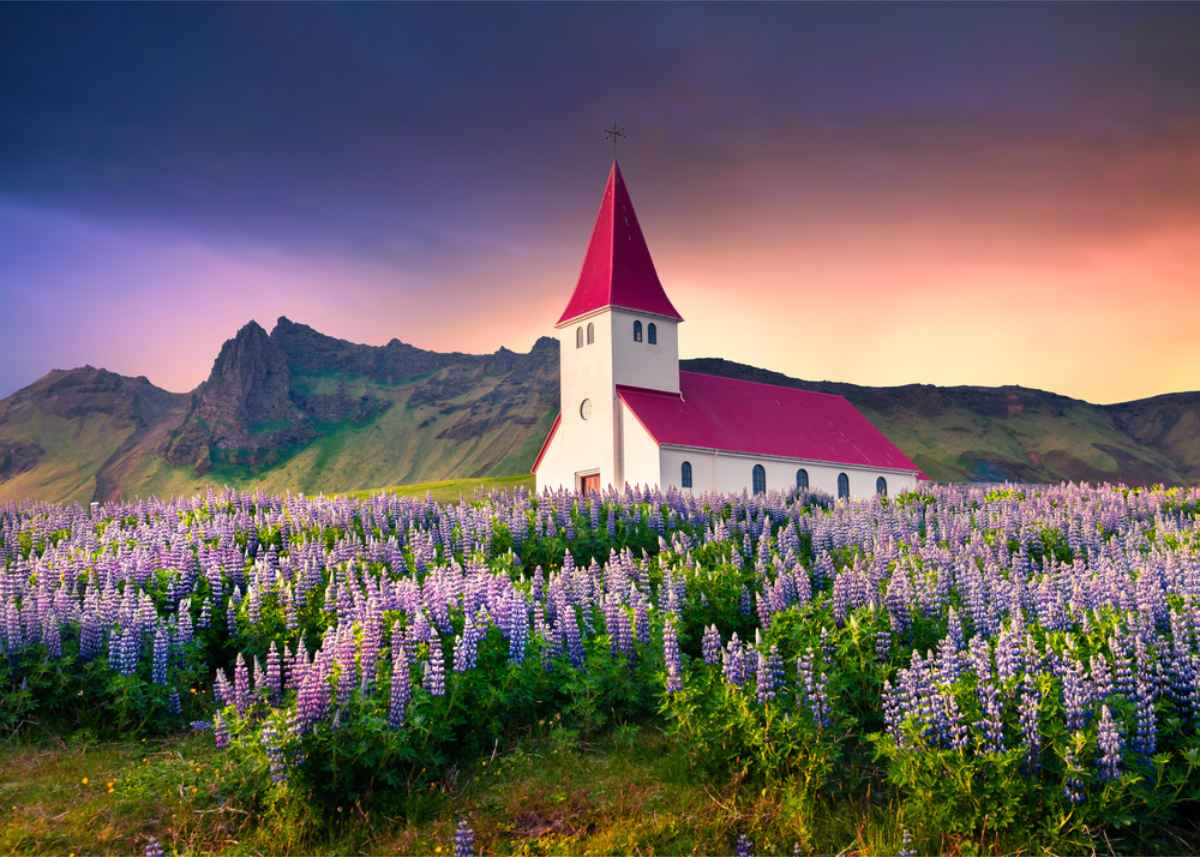
Day 7
Return to the capital city, explore whatever takes your fancy along the way, and spend the rest of the day exploring what you didn’t get to on day 1. Either sleep over at the Reykjavik Campsite again or catch a flight back home.
The Best Time to Fly to Iceland for Cheap
As you can imagine, the cheapest time to fly to Iceland is during our off-season. So, anywhere between January and May, and September and November. You’re more likely to get the best deal possible if you book well in advance and have flexible travel dates. Also, keep an eye out for specials and discounts, as well as flights on budget airlines such as PLAY.
Frequently Asked Questions About the Cheapest Time to Go to Iceland
Below are the answers to some of the most frequently asked questions regarding the cheapest time to go to Iceland:
What Month is the Cheapest to Fly in Iceland?
If you’re looking for the cheapest month to fly in Iceland, you’re in luck since you’ll get treated to three! The cheapest time to fly is during our off season, which runs from November to February (just give the busy festive and New Year period a skip).
Is Iceland Expensive for Budget Travelers?
Absolutely not. With a bit of know-how and a few local insights, it’s easy to organize a budget trip, especially if you’re going to be exploring the island with a campervan and taking advantage of our Camping Card.
What are the Best Budget Activities in Iceland?
The best budget activities in Iceland are the free ones! Enjoy going on hikes, checking out our breathtaking waterfalls, taking a dip in a natural hot spring, or taking a stroll along one of our black sand beaches.
Choose the Cheapest Time to Go to Iceland and Maximize Your Savings
To have the most budget-friendly trip to Iceland, you should not only choose the cheapest time to visit Iceland but also opt for a few other penny-pinching hacks. This includes renting a campervan in Iceland, which takes care of both your transportation and accommodation.
Get the Camping Card or the Reykjavik Card, so you can park/camp/explore for cheap. Also, ask your rental agent if they’ve got any specials or deals with product or service partners around the island. With some proper planning and a bit of know-how, you can have an epic Iceland trip without having to max out any of your credit cards.



 By
By 
